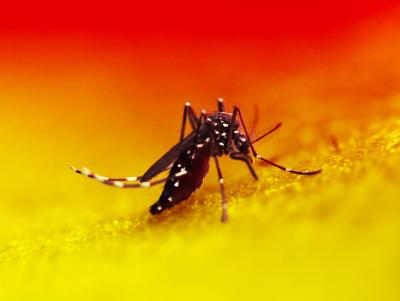
Colorized image of an Aedes mosquito
Neglected tropical diseases (NTDs), such as dengue, lymphatic filariasis, trachoma, and leishmaniasis, are called "neglected," because they generally afflict the world's poor and historically have not received as much attention as other diseases. NTDs tend to thrive in developing regions of the world, where water quality, sanitation, and access to health care are substandard. However, some of these diseases also are found in areas of the United States with high rates of poverty.
Why Is the Study of Neglected Tropical Diseases a Priority for NIAID?
Neglected tropical diseases, take a tremendous toll on global health. The World Health Organization estimates that more than one billion people — approximately one-sixth of the world's population — suffer from at least one NTD. While NTDs rarely lead to death, they can cause significant disability that persists for a lifetime, including fatigue, blindness, and disfigurement. Sufferers miss school, are unable to work, or are too embarrassed to seek medical care. By diminishing quality of life and opportunities to succeed, NTDs can reinforce the cycle of poverty among the world's disadvantaged populations.
How Is NIAID Addressing This Critical Topic?
NIAID has a robust program of research devoted to better understanding, preventing, and treating NTDs. Studies conducted and supported by NIAID have led to important new discoveries about the microbes that cause NTDs, the identification of targets for potential new drugs and vaccines, and the development of strategies for controlling the organisms that transmit NTD-causing agents to humans. Learn more about the NIAID role in neglected tropical disease research.
News Releases
- NIH-Sponsored Trial of Lassa Vaccine Opens
March 17, 2025


